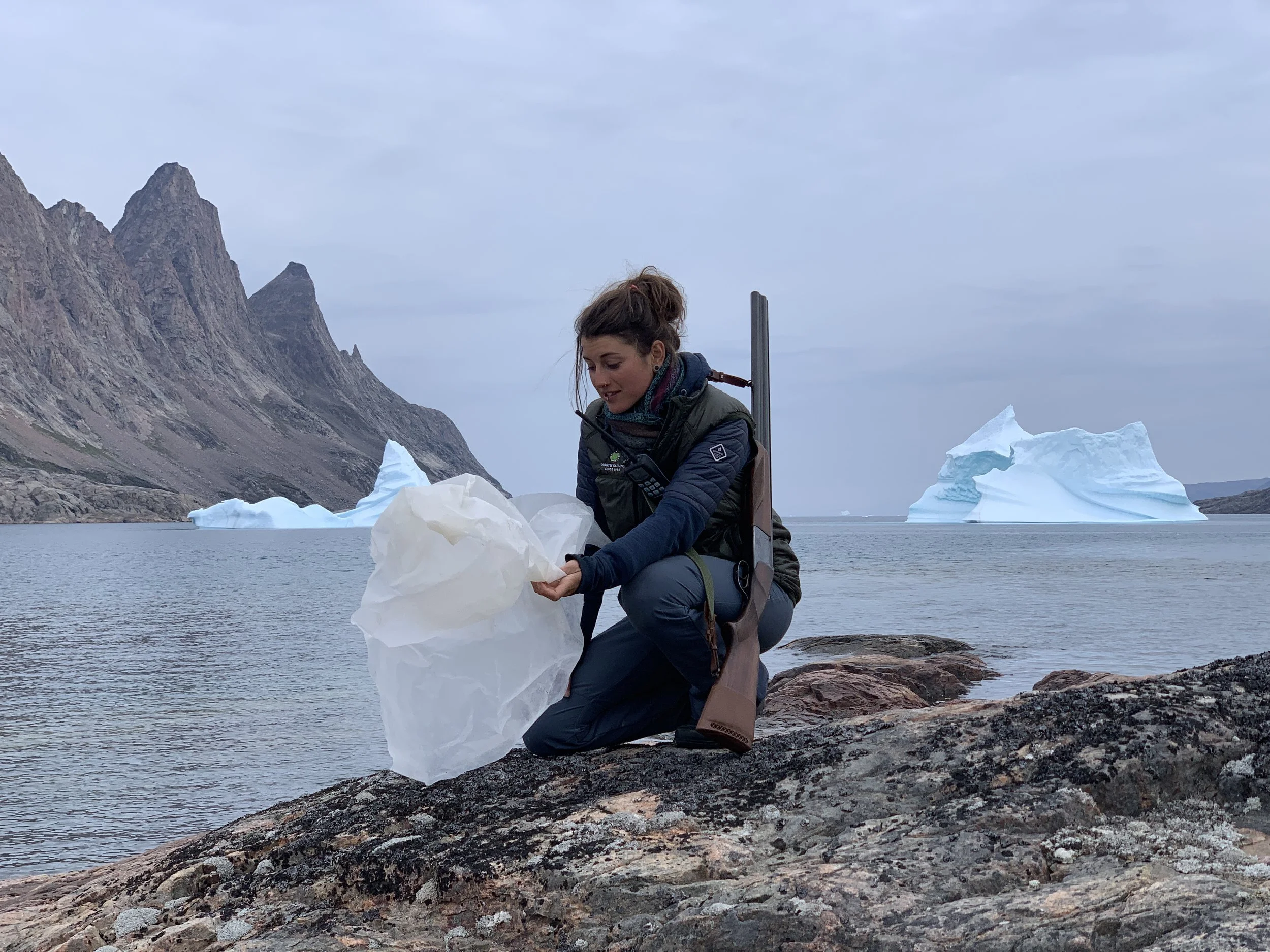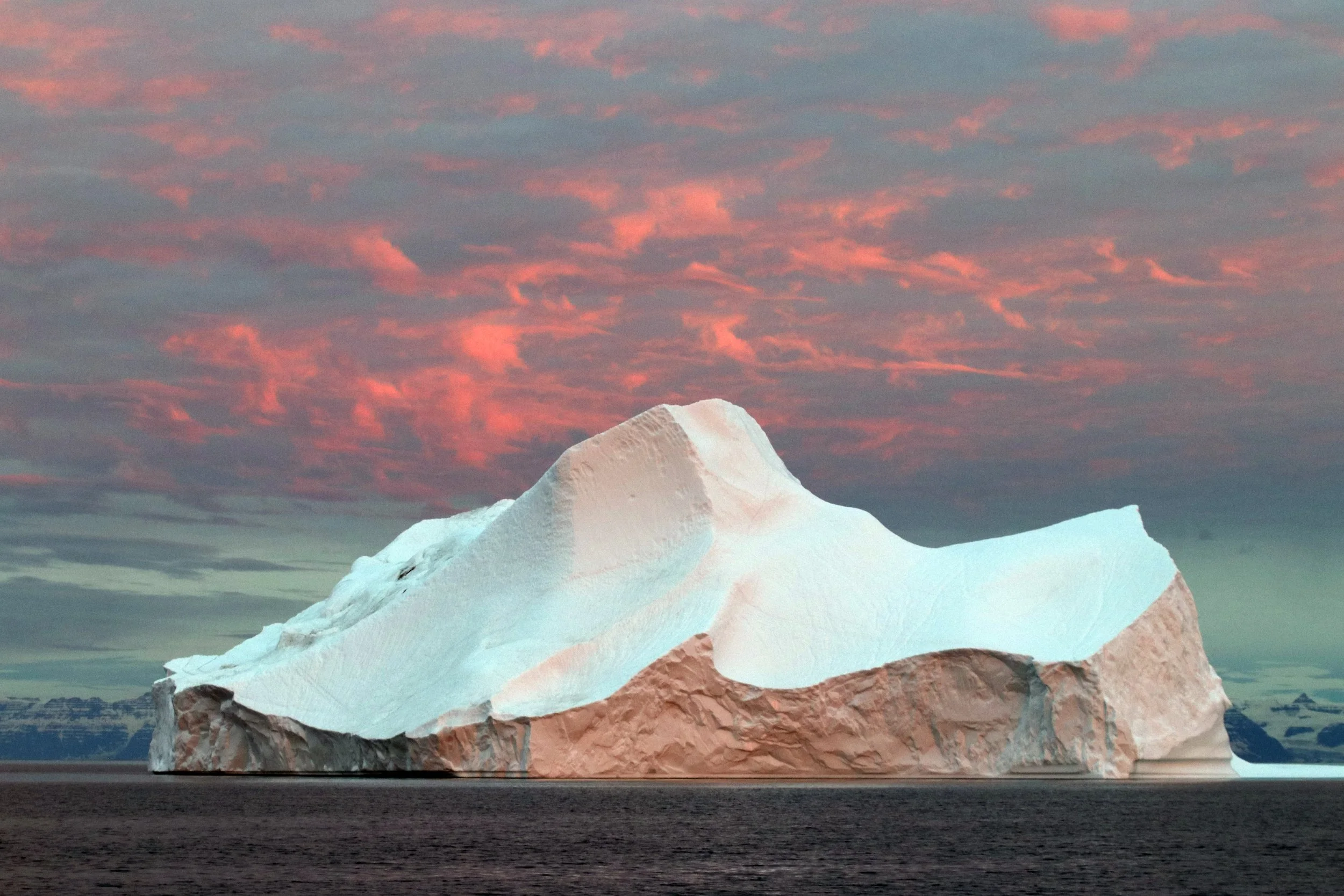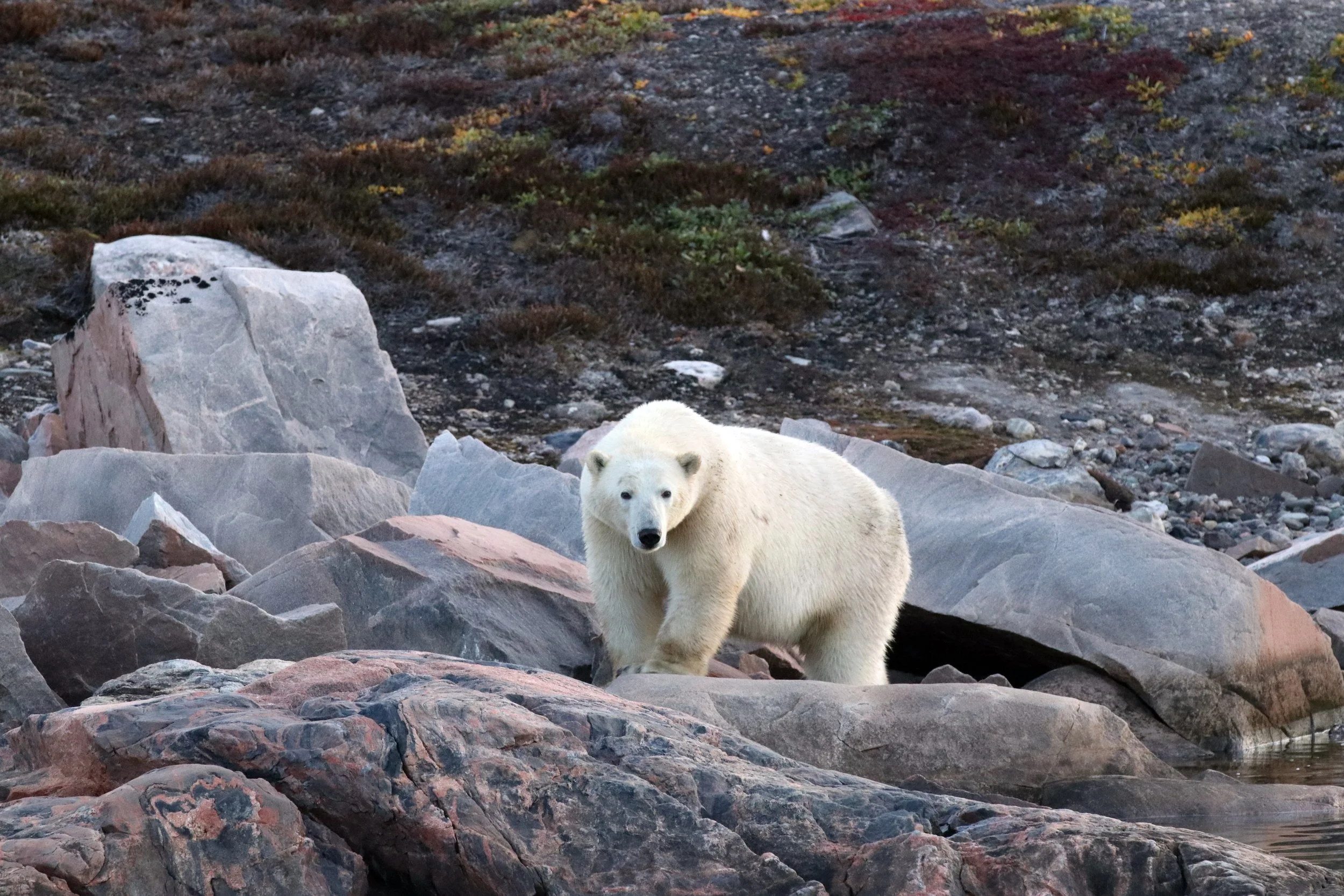Walking on Thin Ice
Animal Problems are Human Problems; We are in This Sh*t Together
By Belén García Ovide, Safina Center Junior Fellow
East Greenland is the origin point of the world’s largest icebergs, excluding icebergs broken off of Antartica’s ice sheet. Photo ©Belén García Ovide
I just got home from spending four weeks in August working in the far north, between the latitudes 70 and 71 in East Greenland. I was a wildlife guide on the Schooner Opal for North Sailing. My first time in Scoresby Sound was in 2018, and I was only there for two weeks. After two years of COVID restrictions, we can finally bring guests to sail in Greenland again.
East Greenland is vast, wild, and sparsely inhabited. In West Greenland, the influence of the warm water branching off the Gulf Current offers better weather conditions to live in year-round. We sailed in the biggest fjord system and in one of the most remote places on Earth. It’s an arctic heaven with outstanding nature located in the outer limits of the world’s largest national park. The biggest icebergs in the world are born here (excluding icebergs broken off of Antarctica’s ice sheet). An extraordinary journey of erosion, huge volcanos, and glacial activity have created valleys, colorful mountains and steep cliffs that reveal more than 2 billion years of extraordinary geological history. Surprisingly, many new operators have come to East Greenland, making it difficult to sail without another ship in view.
Ittoqqortoormiit, one of the most remote settlements on Earth, with a population of just 345 inhabitants. Photo ©Belén García Ovide
In this region, there is only a small village, nestled in the mouth of the fjord system. It is one of the most remote settlements on Earth, with a population of just 345 inhabitants. It is so remote that the nearest town is located more than 250 nautical miles away and it is not even in Greenland-- it is in Iceland! Ships only bring supplies to the village twice a year. Once in the middle of the summer, when the ice opens, and again at the end of the summer, before the fjord freezes again, making the waterway completely impassable.
In 1925 the Danish decided to establish a settlement here. To do so, they moved a group of Innuits from the to East Greenland to refute the Norwegian’s claim to this land. Since then, two small towns, Kap Hope and Ittoqqortoormiit, have been partially subsidized by the Danish. Hunting became an important practice of the local lifestyle. Espcially during the winter‘s isolation, hunting polar bears, narwals, seals, and musk ox provides an important food source to people settled here.
Despite the Danish subsides and basic infrastructure—a school, a hospital, and a grocery storel—ife is definitelly tough here. Kap Hope was abandoned in 2005. The population in Ittoqqortoormiit is decreasing because many people are moving to the West coast or Denmark where they have more opportunities to work. The suicide rate is fairly high. It feels like people are slowly giving up, and they dont seem to be very excited about tourists, either.
Belén exploring the rugged coast of East Greenland in a small inflatable boat. Photo ©Simon Quek
During my last very short visit in the town I just felt like an intruder with so many questions that I was too shy to ask.
How many polar bears and narwals are they really hunting? Are they following the quotas if nobody is watching? Is there really a need to hunt? Is smuggling animal products an issue here? Are there still narwals in the fjords? Why there is there so much trash lying around in such remote place? Is there any garbage management here? How aware are these people about the importance of protecting the local wildlife? I asked around these questions, but it is hard to get the truth when the locals are not interested in talking and research is so limited.
Belén conducting the first assessment of plastic pollution in East Greenland. Greenland authorities require people to carry a rifle when in polar bear territory.
Scoresby Sound, where this photo was taken, is one of the most remote places on Earth. Yet still, there is plastic. Photo ©Heimir Hardarson
But before I dare to even mention any of these potential issues with the inhabiats of Ittoqqortoormiit, I wonder, has anyone ever told the world the true story of these people? What do the Danish, the tourism companies, or the visitors really know about them?
Has the government and these companies ever wondered about how these hunters are dealing with the challenges of climate change? What do they think about us tourists and foreigner visitors? How much do they care? I wish I had the chance to spend real time with them, to learn and understand more about what their lives are like. Not as an outsider, but as someone that actually cares.
That evening at sunset I heard a group of five or six leashed dogs howling and I sat alone and observed through my binoculars them for a while from the boat. I remember one of them kept staring at me with a hopeless look. After some time I noticed they were crying...But wait, where are all the dogs? There used to be three times more sled dogs than people living here. I remember from three years ago we used to hear them from all over the town, and they all would howl together at night, creating an evening chourus. My readings in the guide material come to mind “In recent years snowmobiles have replaced dogs for hunting musk ox, and dogs are not pets so they are not of any value otherwise here, just one extra mouth to feed“... Okay so, what happened then with the dogs?
It is overwhelming. It makes me feel like I‘m walking on thin ice that can break at any time. We know that climate change and modernization threatens both the people living in small Arctic communities and Arctic wildlife. It‘s as clear as a reflection in the calmest sea. Their survival depends completely on the ice. Every year there is less ice, shortening the hunting season for people and bears. There is less ice for seals to rest and for narwals to hide.
Climate change and modernization threatens both the people living in small Arctic communities and Arctic wildlife. Photo ©Belén García Ovide
That day I had my first encounter with a polar bear. He looked me directly in the eyes and I found a familair expression. It was the look of a humble creature just trying to survive and wondering why?
Who will give up first? The people or the animals. If nobody is listening to these fragile living beings, then they will disappear forever.
It makes me reconsider my role in it all. I feel like I‘m just bringing tourists here to see the Arctic vanish. At least I‘m sure we will have enough pictures in Instagram about icebergs and polar bears.
80% of Greenland is ice. According to an article published in Science “a large part of Greenland's ice sheet may be close to such a tipping point. The complete melting of Greenland's ice cap could lead to a sea-level rise of up to 7 meters and may trigger a cascade of other climate instabilities. We must do everything possible to prevent crossing tipping points.” (Boers and Rypdal, 2021).
Protecting Greenland and Arctic wildlife should be like taking care of our mothers. They gave us food and a safe place to live for as long as anyone can remember. Now is our time to prove we‘re grateful and give back.
A polar bear makes eye contact with Belén, who is behind the camera. She notices a familiar expression, the look of a humble creature just trying to survive. Photo ©Belén García Ovide
Arctic wildlife looks to us to act on climate change. Are we ready to look back?
Belén in East Greenland, with towers of ice in the background. 80% of Greenland is ice, but climate change is threatening to change that. Photo ©Simon Quek
Reference:
Boers, N. and Rypdal, M. Critical slowing down suggests that the western Greenland Ice Sheet is close to a tipping point. Proc Natl Acad Sci USA2021, 25;118(21):e2024192118. doi: 10.1073/pnas.2024192118.







